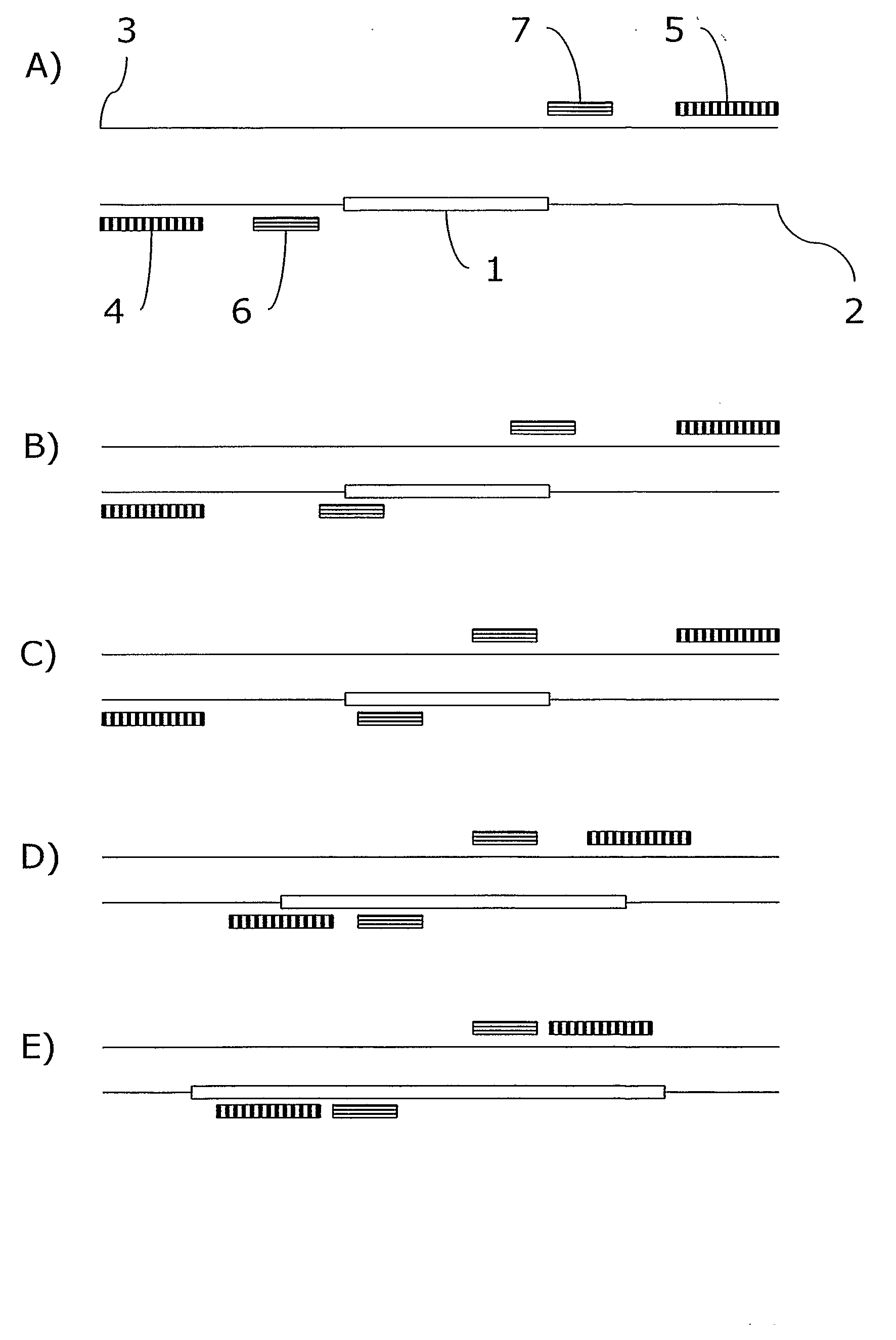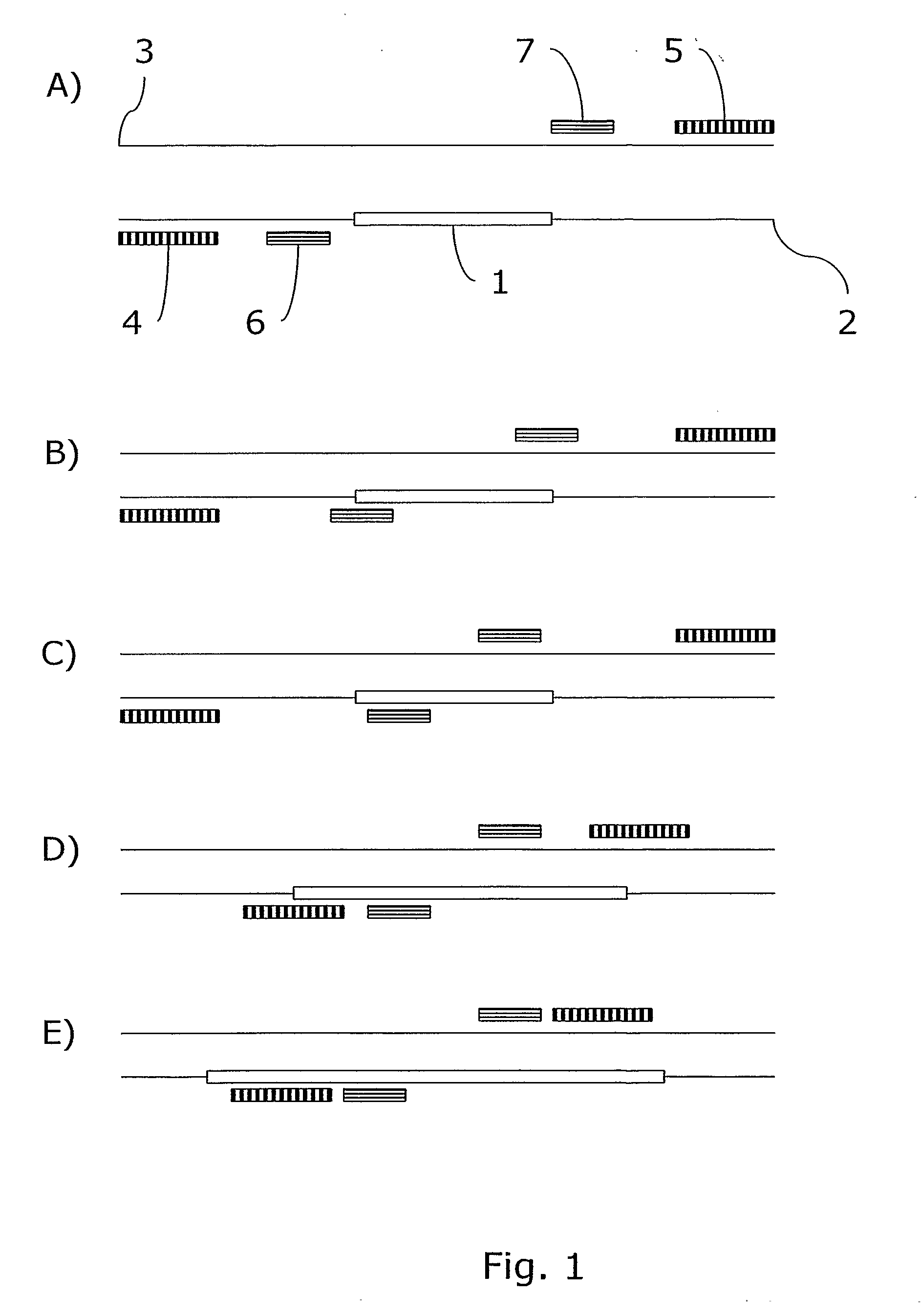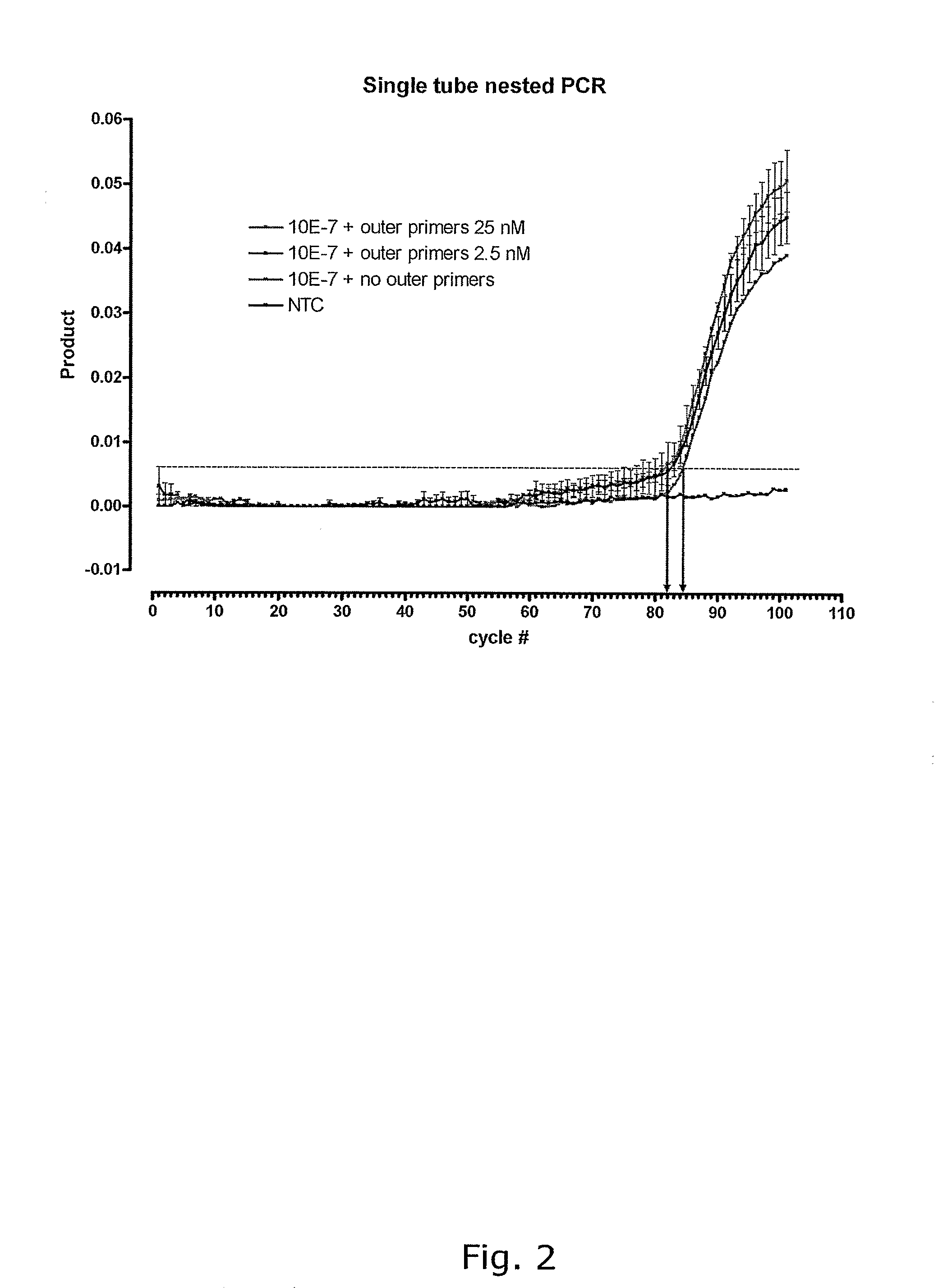Method, Kit and System for Enhanced Nested Pcr
a nested pcr and kit technology, applied in the field of methods, can solve the problems of difficult adaptation to automated analysis systems such as biochips, complex and time-consuming handling of samples, and host death, and achieve the effects of rapid and/or sensitive amplification or detection of target nucleic acid molecules, simple and robust, and rapid and/or sensitive amplification or detection
- Summary
- Abstract
- Description
- Claims
- Application Information
AI Technical Summary
Benefits of technology
Problems solved by technology
Method used
Image
Examples
example 1
Oligonucleotide Primers and Probes
[0223]Primers and probes were designed using the software VectorNTI™ version 5.0 (Informax, Inc., Frederick, Md.). Sequences for primers and probes are shown in Table 3. The GenBank Accession numbers for the reference sequences used to design the primers and probes for each target are shown in Table 3, along with the relative location of each primer and probe.
TABLE 3SeqLengthTmPrimerIDNameSequencebases° C.pXO2 outer sense1PcapAlnS5′-GGCGAAACATGACGAAAAAC-3′2060.1primerpXO2 outer antisense2PcapAlnA5′-CCTCGTTATGTAGCAATCGTATTAC-3′2559.4primerpXO2 inner sense3PcapAnesS5′-TTACGTGACGTCCCATC-3′1751.2primerpXO2 inner antisense4PcapAnesA5′-TGCGACATGGGTACAAC-3′1752.2primerPROBE-pXO25PcapAprobe5′-FAM-CAACCATCGTCATCGTCAATT-BHQ-3′2160.2pXO1 outer sense6PXouts5′-AAAAGGTAACAAATTACTTAGTTGATGG-3′2860.5primerpXO1 outer antisense7PXouta5′-CGAAGTTAAATTACTCCCTTCTTCCTT-3′2763.4primerpXO1 inner sense8PXIns5′-GGGTTATATGTTCCAGAATC-3′2050.6primerpXO1 inner antisense9PXIna5′-G...
example 2
[0228]PCR Conditions
[0229]The DNA Engine Opticon™ hybridization mixture was identical for each B. anthracis gene target (with the exception that each primer and probe set was specific for the particular gene target that was amplified).
[0230]A standard 1×DNA Engine Opticon™ hybridization mixture for B. anthracis capA or Lef comprises the following (Karsai et al.):
[0231]10 mM TrisHCl, pH 8.5
[0232]50 mM KCl
[0233]2 mM MgCl2
[0234]0.1% Tween-20 and / or 0.15% Triton X-100
[0235]±20 μg / ml of BSA
[0236]±0.3% DMSO or 0.8% glycerol
[0237]The DNA Engine Opticon™ thermocycling conditions were identical for each gene target and are listed in Table 4.
TABLE 4Number of cyclesCommentTemperature (° C.)time1Denaturation95.0 5 min50Outer primers95.010 sec63.030 sec51Inner primers95.010 sec51.030 sec60.030 sec4Until stopped
[0238]To generate the 912 bp pXO1 template, DNA was isolated from an overnight culture of Bacillus anthracis grown on solid substrate. Colonies was scraped of, resuspended in TE-buffer an...
example 3
[0242]Melting Curves
[0243]Following the completion of the amplification reactions, a melting curve analysis can be performed. The determination of Tm can be used to check the specificity of an amplified product. Using SYBR® Green fluorescence during a temperature increase, a decrease in fluorescence is observed as the product undergoes denaturation. The temperature in the DNA Engine Opticon™ thermal chamber is raised from 50° C. to 85° C. at 0.2° C. per second. Fluorescent measurements is taken continuously as the temperature is raised and melting curves is generated. Each product has a specific and characteristic melting curve from the respective PCR reactions. Optionally, the melting curve determination can be followed by re-annealing at 72° C. for 5-10 min if the samples are to be analyzed e.g. using agarose gel electrophoresis.
PUM
| Property | Measurement | Unit |
|---|---|---|
| Tm | aaaaa | aaaaa |
| Tm | aaaaa | aaaaa |
| Tm | aaaaa | aaaaa |
Abstract
Description
Claims
Application Information
 Login to View More
Login to View More - R&D
- Intellectual Property
- Life Sciences
- Materials
- Tech Scout
- Unparalleled Data Quality
- Higher Quality Content
- 60% Fewer Hallucinations
Browse by: Latest US Patents, China's latest patents, Technical Efficacy Thesaurus, Application Domain, Technology Topic, Popular Technical Reports.
© 2025 PatSnap. All rights reserved.Legal|Privacy policy|Modern Slavery Act Transparency Statement|Sitemap|About US| Contact US: help@patsnap.com



